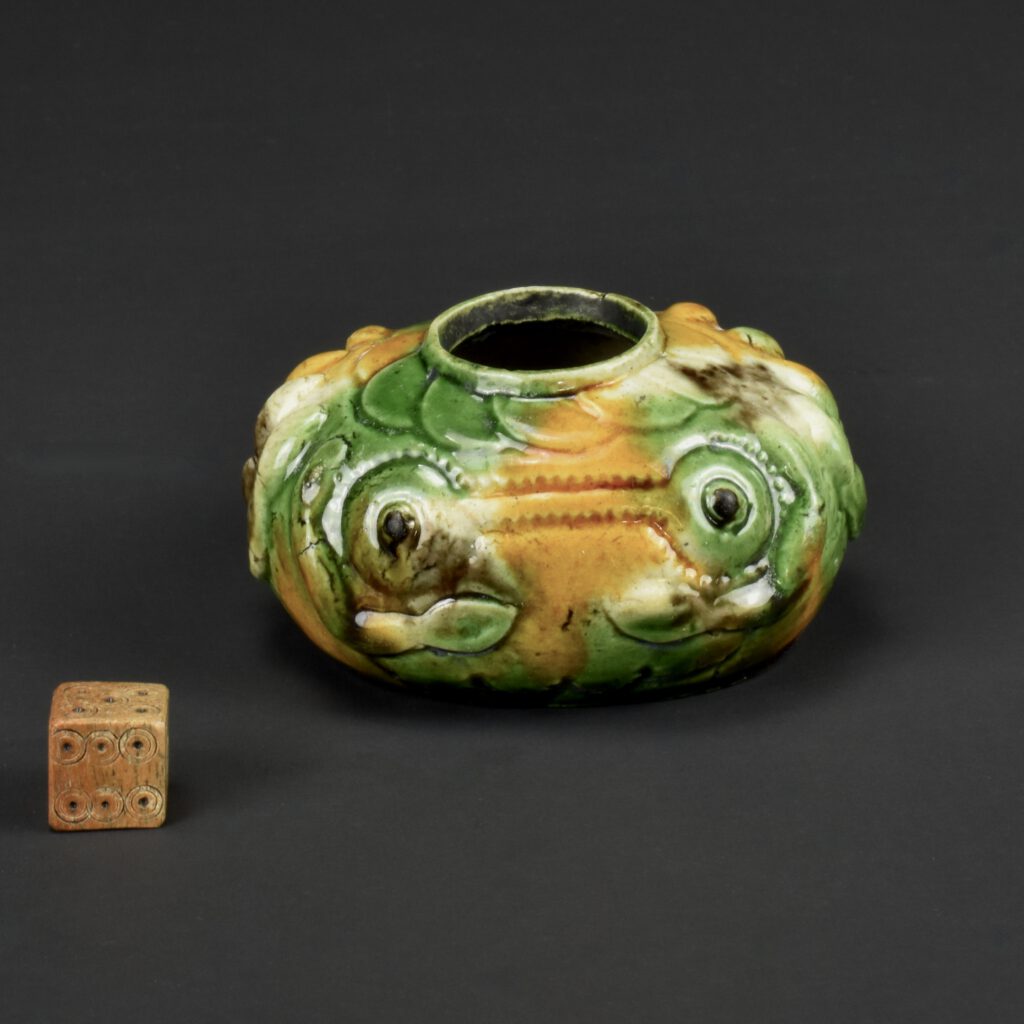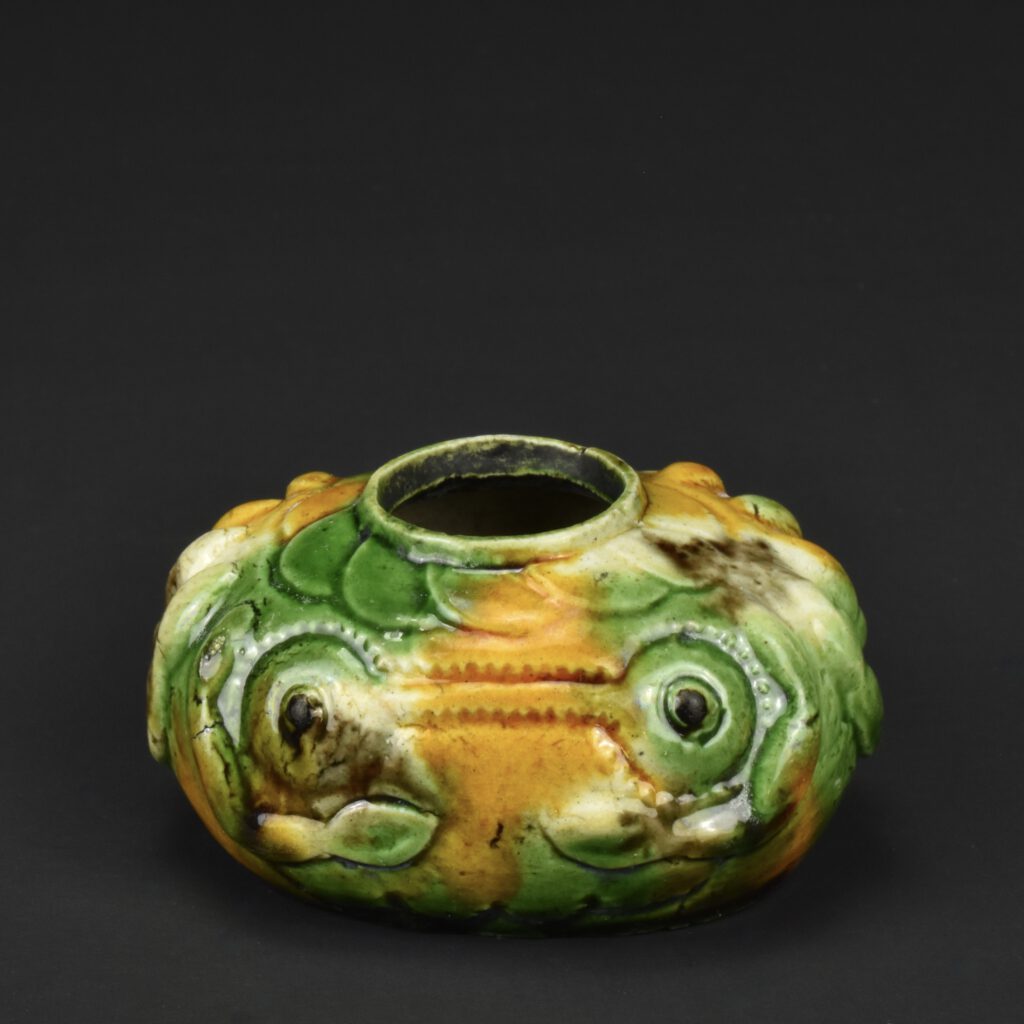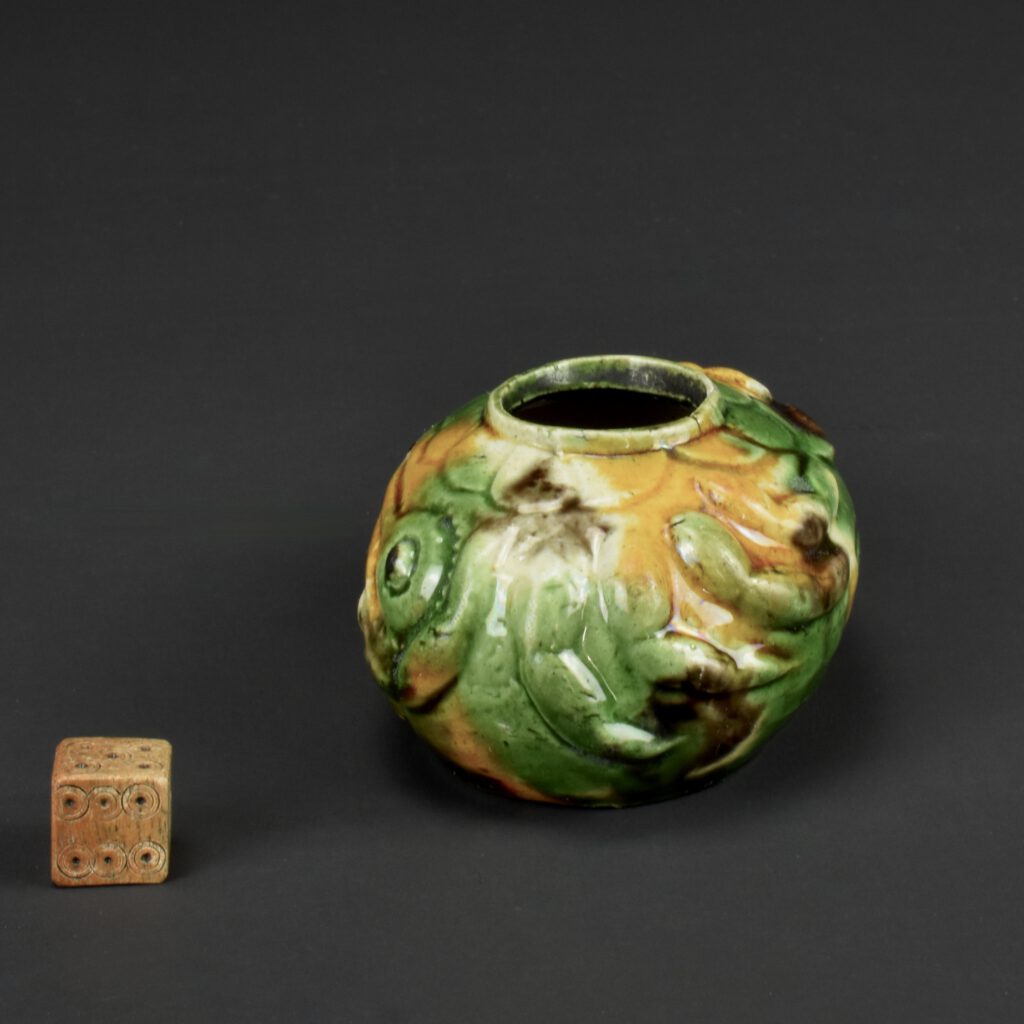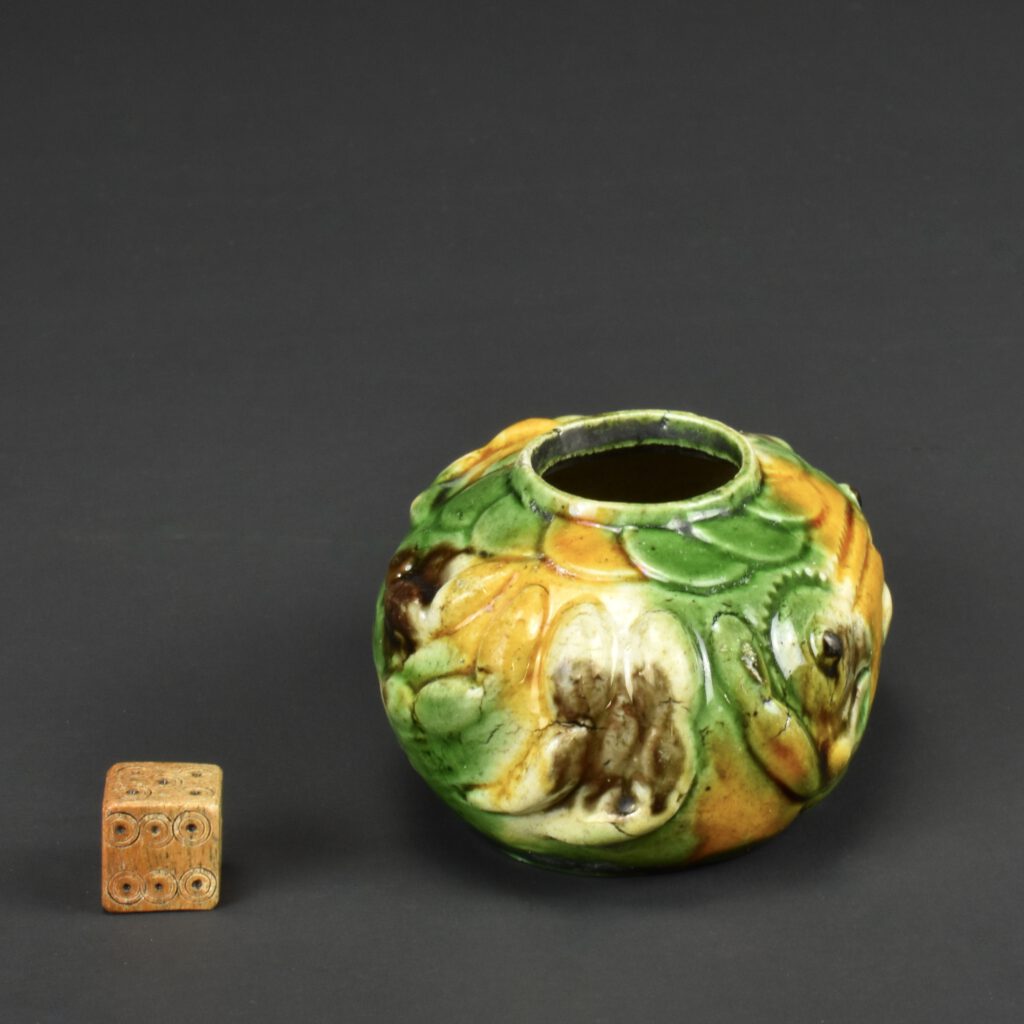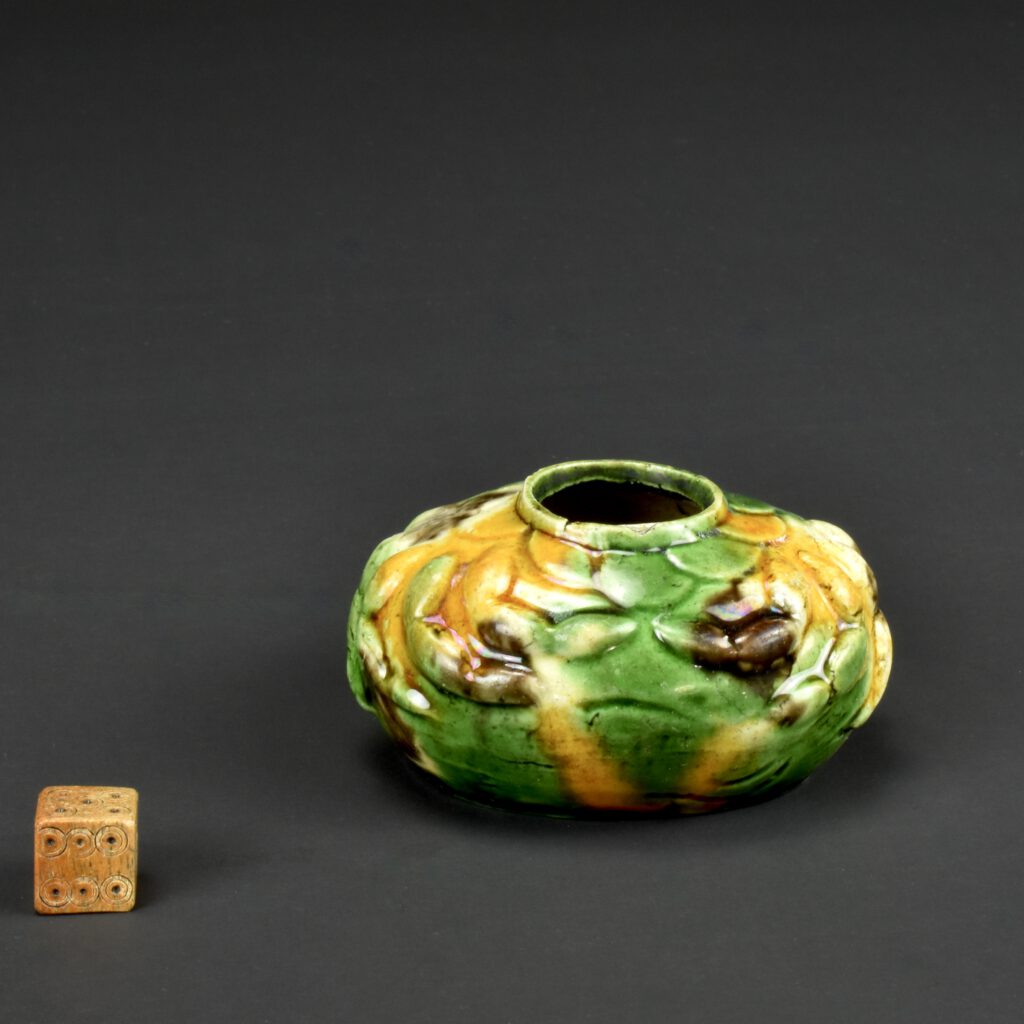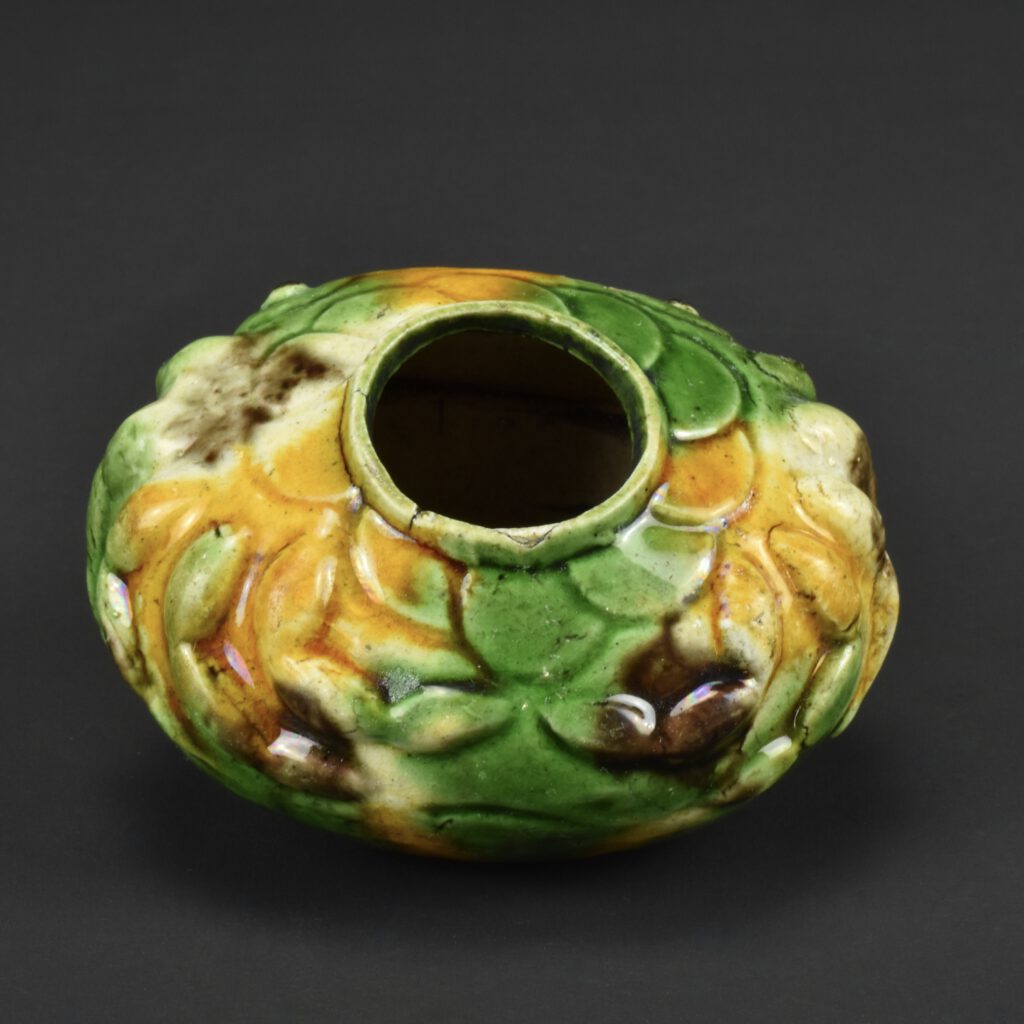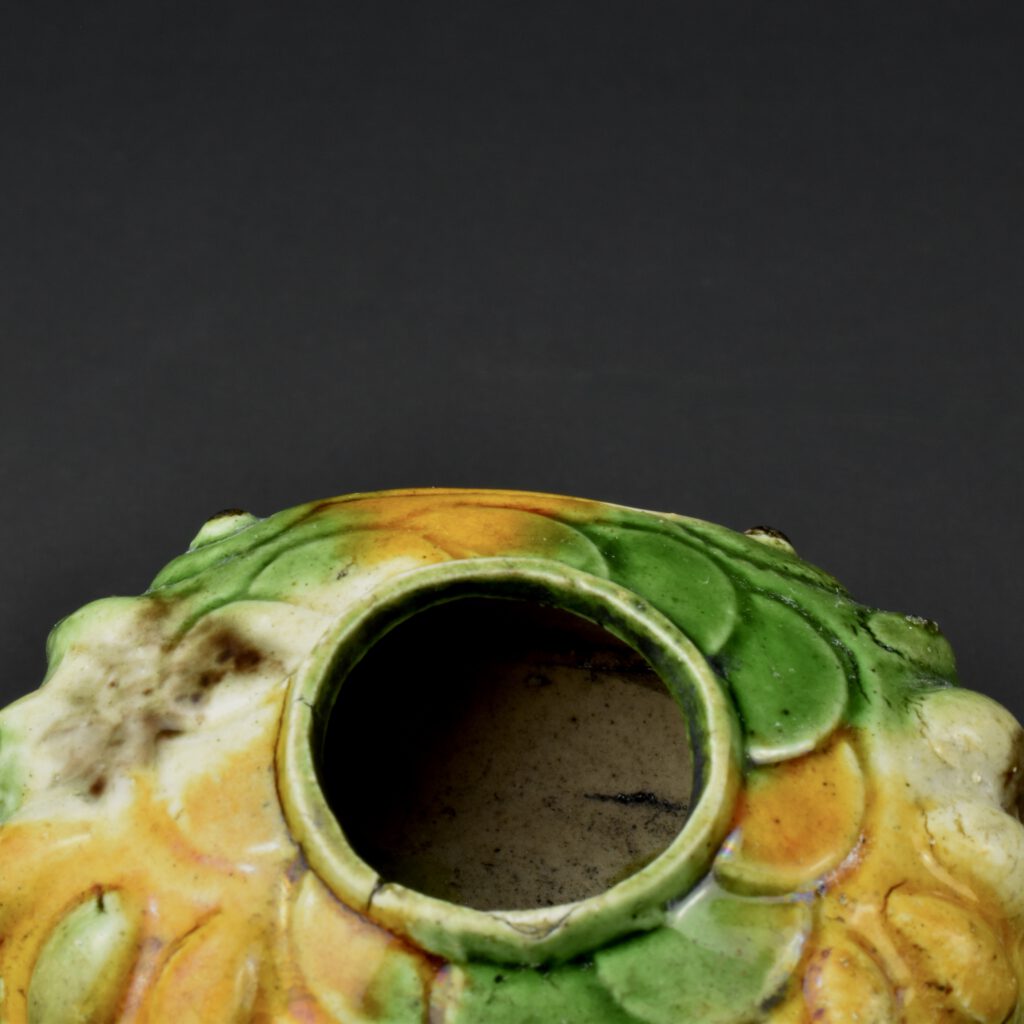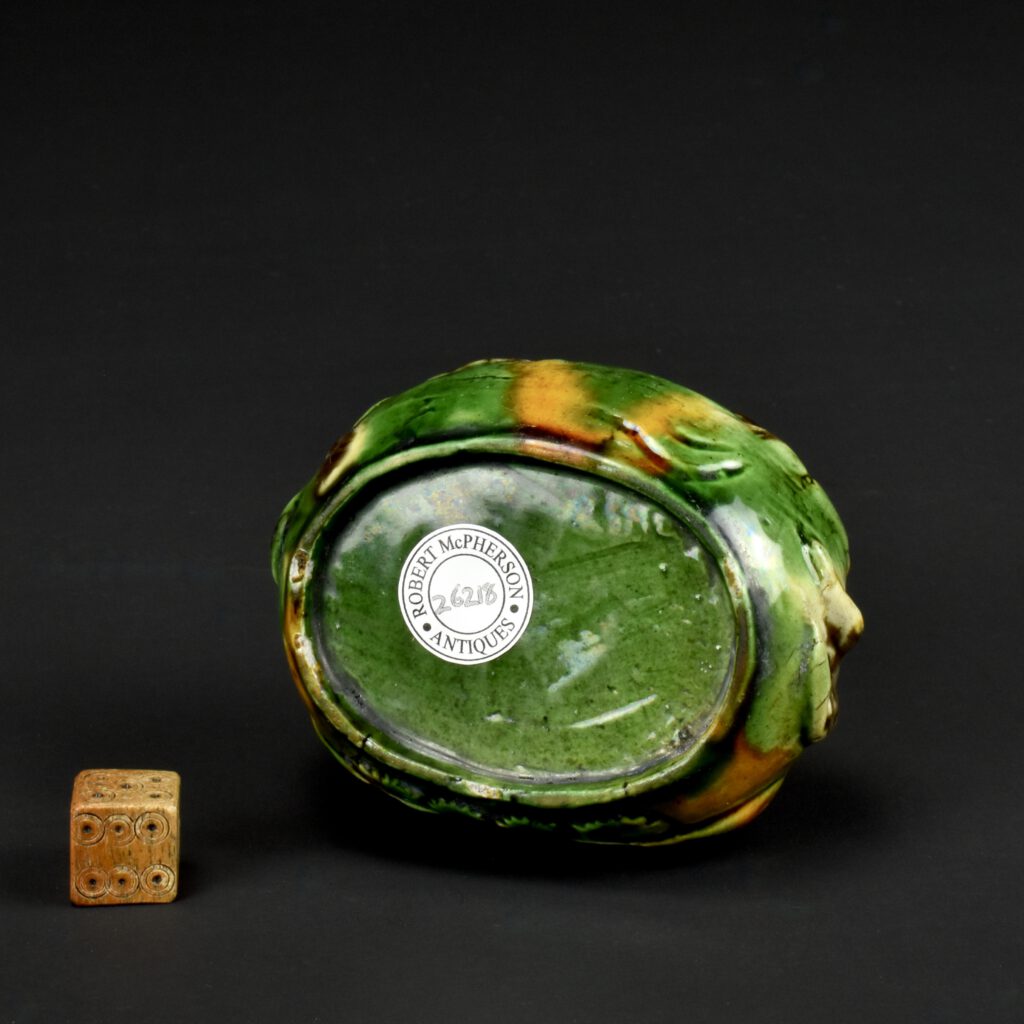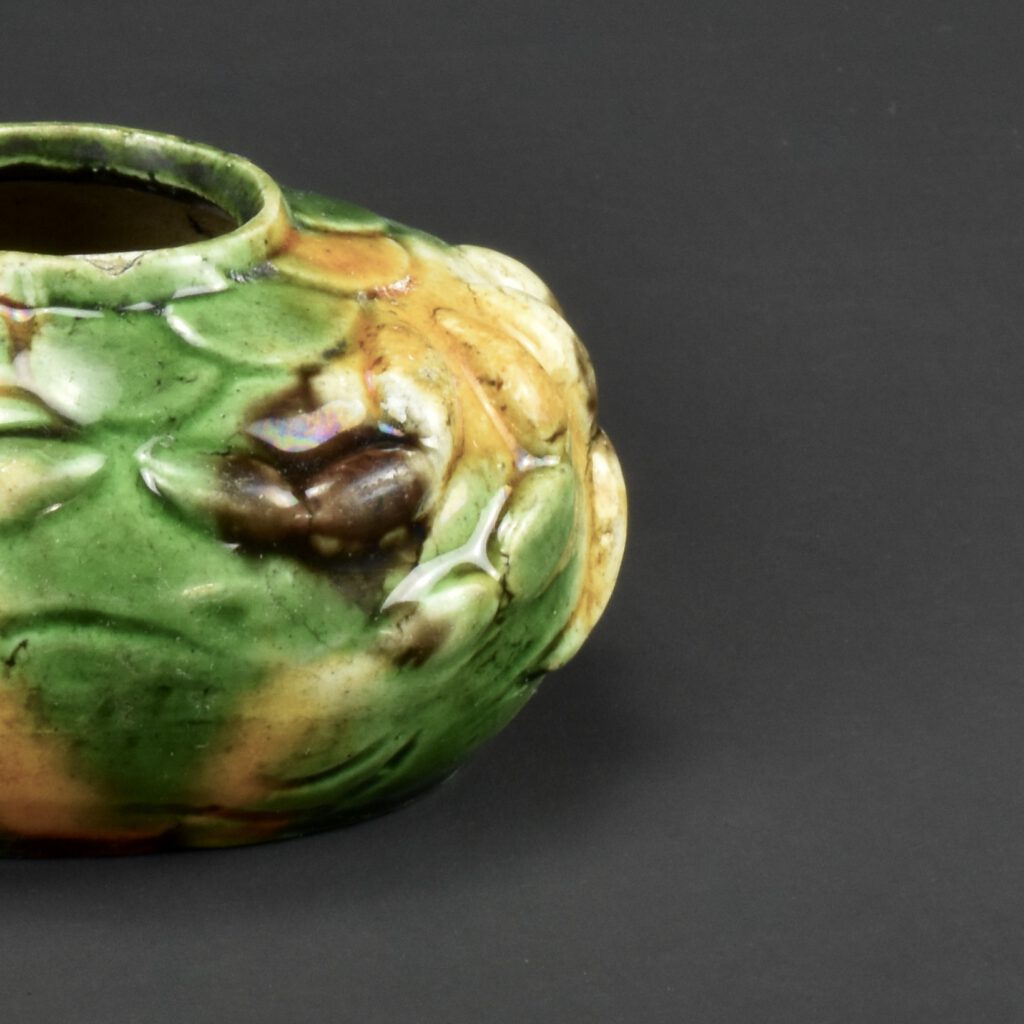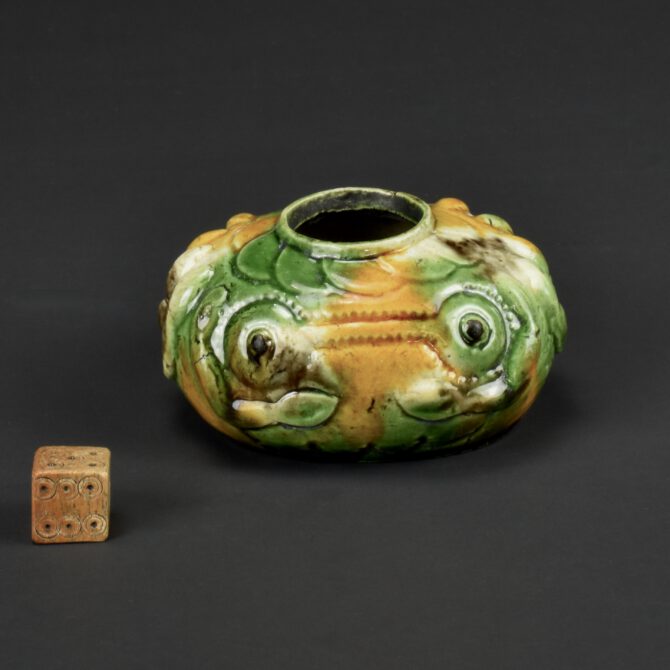
A Kangxi Egg and Spinach Porcelain Crab Form Water-Pot
A Kangxi Egg and Spinach Crab Form Water-pot, Jingdezhen Kilns, Kangxi Period 1662-1722. This highly stylised water pot has a very strange crab face, to the front and legs radiating around the body of this water pot. The base is recessed and has a thin footrim supporting the object. Xie, Crabs are normally depicted on Chinese porcelain in the context of other marine crustacea together with aquatic plants. On their own the appear only rarely and as single creatures they have a different meaning. They are used to represent achievement as Xie is a homonym for the those who have passed the first examination towards official rank, Xie. In folklore, the crab can repel bad magic and restore a man’s potency (take your choice).
SOLD
- Condition
- A small fracture in the rim (there is a dark line in the rim, this is not damage but a firing fault filled with glaze)
- Size
- Width 7.3 cm (2 3/4 inches).
- Provenance
- N/A
- Stock number
- 26218
- References
- For a very similar Kangxi porcelain water-pot, see : Sotheby’s London, Catalogue of Fine Chinese Export Porcelain, Jades and other Works of art, March 1st 1977, lot 126.
Information
Scholar's Objects
The term `Scholar's object` refers to something used by a Chinese scholar in his or her studio, it includes everything from scroll-tables, desks, screens, and chairs to the smaller objects found on the scholar's desk. The material used for these desk objects varied greatly, from bamboo to stone, ivory, wood, and metal, but ceramics were by far the most commonly used material, even though ceramics rated lowest in ranking of importance. Bamboo, ivory, or wood might not be durable enough and metal was sometimes too heavy but ceramic objects could be thrown or moulded into an infinite variety of forms. Most of the objects made centred around the functions of writing and painting. Brushpots of different sizes and shape were needed to take the various types of brush, the same applies to brush rests. Water-droppers for adding water to dry solid ink when it was ground on an inkstone, as well as the inkstones themselves were all needed, as were water-pots and brush-washers. All of these could be made of porcelain. But these were not merely functional items, they conveyed symbolic mean, often enhancing scholarly virtues and the wish for longevity. They were meant to inspire the writer, poet, and artist but it is clear they could also exhibit a great sense of humour, sometimes having almost childlike quality. Objects for the scholar's desk were made from many different ceramic bodies, during the Song Dynasty (960-1279) Qingbai porcelain was most frequently used, often in moulded forms. Blue and white porcelain objects became popular from the Ming dynasty onwards. By 17th and early 18th century, Blanc de Chine, and biscuit porcelain with coloured glazes such as green, aubergine or turquoise were also popular. Some of these objects were shipped to Europe at the time. The records of the Dashwood, a British trading vessel, were sold at in September 1703, this Supra-cargo, include 10,800 `square toys`. These were Blanc de Chine seals, I have bought and sold many of these over the years. Some are uncut, some have mould seals to the base and could have been used in China, there seals that were engraved, its likely these were not exported. However, the label, 'square toys', shows that in Britain they were seen as novelties to show friends and to be on display in cabinets. I'm not sure if the Chinese scholarly class would have approved.
Egg and Spinach
Egg and Spinach is another of those Western terms used to categorise Chinese ceramics. Unlike many other terms the West has applied to Chinese porcelain, for example Kraak ware or Transitional porcelain, this one is more straightforward and less contentious. The group is characterised by the enamel decoration being directly on to the unglazed `biscuit` porcelain body, it is possibly more correct to describe this as a stained glaze rather than an enamel. The piece was then finished with a clear glaze. Egg and Spinach relate closely to Tang Sancai pottery of the 8th century, these lead glazed wares also have colours that run into one another. The blotchy enamel colours of Egg and Spinach consist of a rich green, a brownish aubergine and yellow with areas of body colour showing through the clear glaze (no doubt created by wax resist). This type of decoration could sometimes include areas, for example the interior of a bowl, decorated in blue and white. These pieces appear to date to the early 18th century rather than earlier. Egg and Spinach itself was popular in China from the Transitional period of the middle of the 17th century until the second quarter of the 18th century. In my view most of the Egg and Spinach was produced in the early 18th century but the literature often suggests an earlier date. Clearly the pieces with blue and white decoration relate to closely to late Kangxi and Yongzheng porcelain. The Ca Mau Cargo had many small pieces with Egg and Spinach decoration, this wreck dates to the Yongzheng period (1723-1735). Indeed, most pieces with this distinct colour scheme were small. Egg and Spinach was used in the 19th century, many of these objects were copies of, or at least based on, the original 17th and 18th century examples. In late 19th and early 20th century Europe it was wildly collected, often with other biscuit decorated Chinese porcelain, collectors such as Mrs. Nellie Ionides (1883 – 1962) were at the forefront of this trend.
Robert McPherson - Sold Archive.
Kangxi Blanc de Chine Porcelain Water Pot from the Vung Tau Cargo.
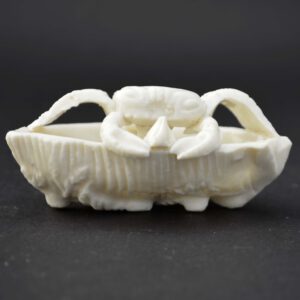
SOLD
Condition
In excellent condition with only very minimal glaze degradation to immersion in sea water. A firing crack across the legs of the crab.
Size
Length : 8 cm ( 3 1/4 inches)
Provenance
The Vung Tau Cargo, Chinese Export Porcelain. Christie`s Amsterdam, 7th and 8th of April 1992 (no label). From a small collection of pieces from the Vung Tau cargo.
Stock number
24799
References
For a Kangxi Blanc de Chine porcelain water pot from the Vung Tau Cargo of this form from c.1690 see : Porcelain From The Vung Tau Wreck, The HallStrom Excavation (Christian J.A. Jorg and Michael Fletcher published by Sun Tree Publishing Ltd. ISBN 981-04-5208-X) page 86 Fig. 86. For a Blanc de Chine Kangxi porcelain water pot, dated to c.1690, of very similar form but with the addition of applied prunus flower-heads see : Blanc de Chine (Introduction by John Ayers, S.Marchant & Son, 2006. ISBN 0-9554009-0-2) page 93, plate 61.
A 17th Century Blanc de Chine Crab Water-Dropper.
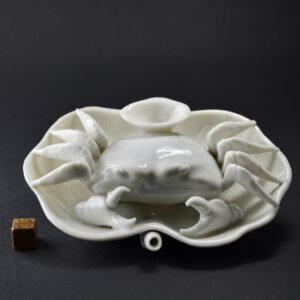
Condition
Repaired, there is an old repair to the back, a large section has been broken out and restuck. Within this section there is a related restuck chip only visible from above. The U-shaped section that has been broken out is 60 x 35 mm. There is a flake chip to the back of the water inlet behind the crab 10 x 10 mm.
Size
Diameter : 14.7 cm (5 3/4 inches)
Sold Archive 25045
References
For a very similar Blanc de Chine porcelain water dropper dated to c.1640 see : Exhibition of Blanc de Chine (S.Marchant & Son, London, 1985) plate 33, offered for sale at £2,000. For a further Blanc de Chine water dropper dated as Ming c.1640 see : Exhibition of Blanc de Chine (Marchant, London, 2014. ISBN 978-0-9568400-7-3) page 96, plate 72. Offered or sale at £12,000.
